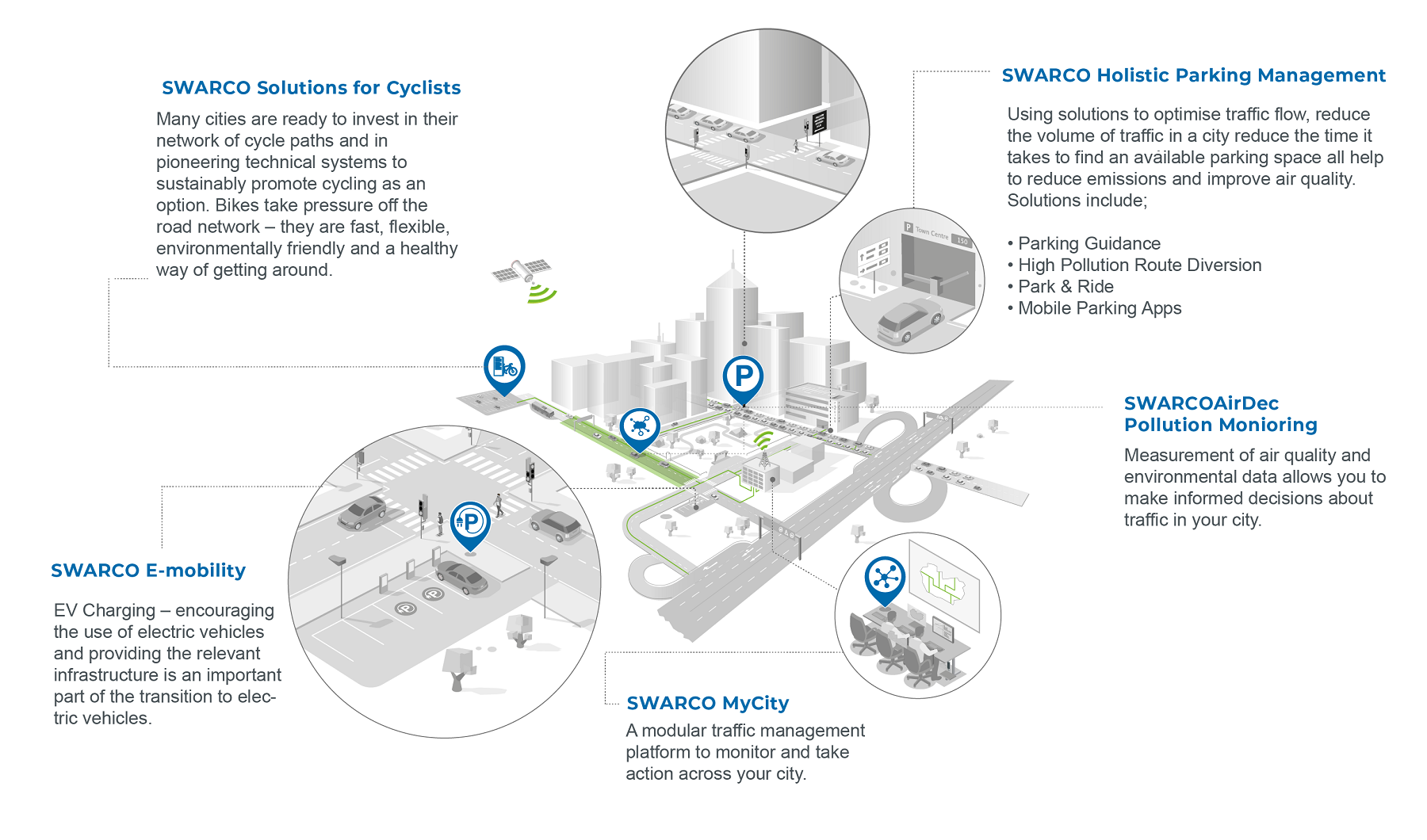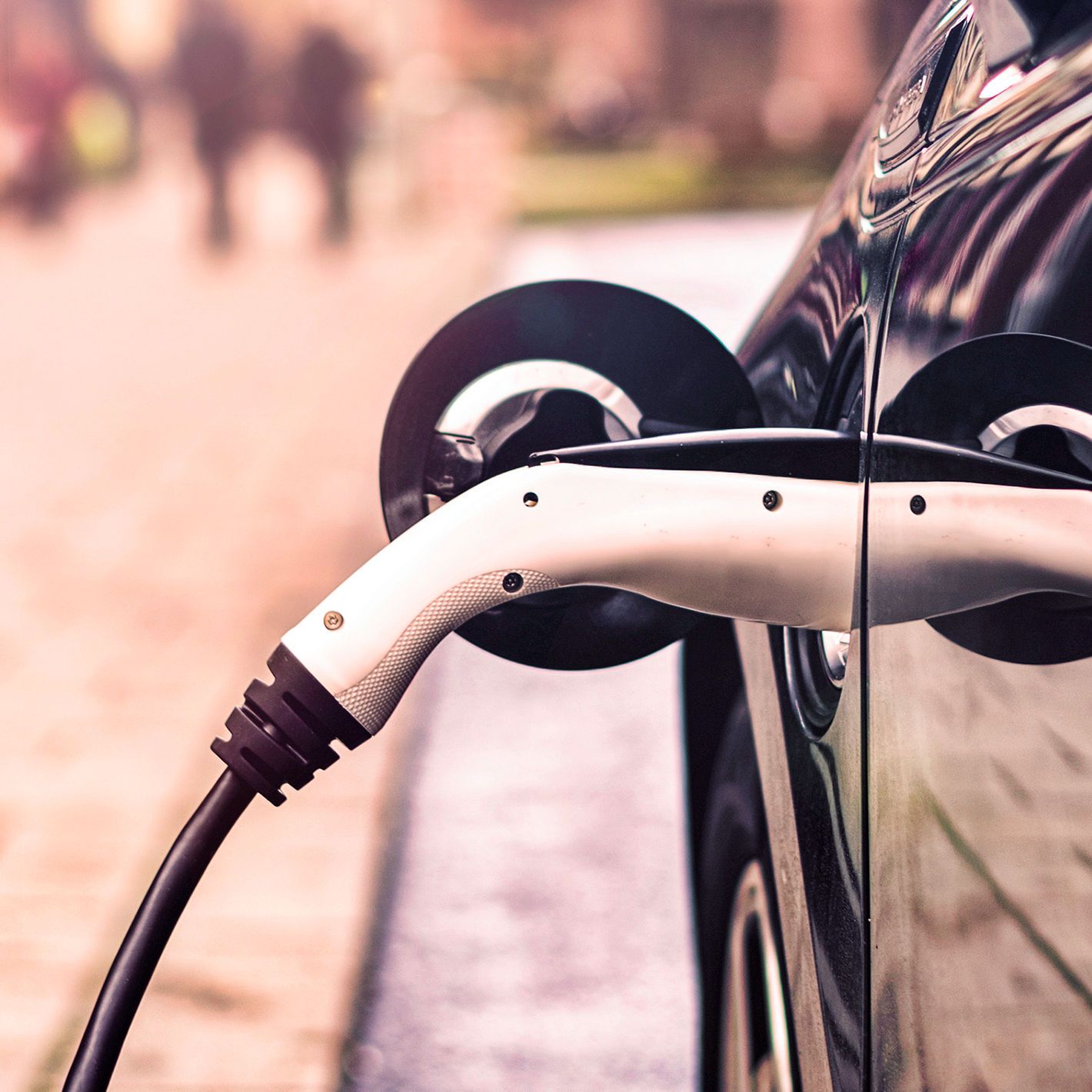Air Quality Solutions
How To Improve Air Quality In Your City.
Poor air quality affects everyone, including pedestrians, cyclists or drivers. It affects our health, environment and also impacts the economy. It’s become a priority over the past few years to not only understand the air quality in our cities and urban areas but to implement strategies that can improve it. As transport is a large contributor to air pollution, changes to the way traffic management is implemented can have a big impact on improving air quality.

Sense, Collect, Analyse, Visualise, Act

Outdoor air pollution could cause 6 to 9 million premature deaths yearly by 2060 and cost between 1-5% of global GDP, according to OECD reports. The same report states evidence that suggests that the road transport sector is the leading cause with a share of approximately 50% of air pollution-related deaths in the European Union and the United States.
Understanding the sources of air pollution is the first step in addressing the issue. Only then can you analyse, plan and implement strategies to improve air quality, bringing health & environmental benefits to the local area.
Solutions
That Can Help To Improve Air Quality
AirDec
Air quality sensors such as the AirDec from SWARCO, where the sensor is built into the infrastructure of a COMBIA traffic signal can measure weather data like rain intensity, humidity, air pressure and temperature as well as particulate matters (PM1.0, PM2.5, PM10) and harmful oxides such as (CO) (NO2) and (O3).
In one example of using pollution monitoring to affect the behaviour of road users, the Norwegian Public Roads Administration recently developed a cooperation with the Norwegian Meteorological Institute to provide live air quality updates and a forecast for 48 hours ahead to allow its most at-risk citizens to make informed decisions about their activities. The forecast takes a number of valuable factors into consideration and is an example of how collecting data on air quality can improve quality of life.
EV Charging
One of the main barriers in the uptake of electric vehicles is the available infrastructure to charge them. Providing the appropriate infrastructure for Electric Vehicles will create trust with the public, the introduction of clean air zones in heavily polluted city centres are coming into action and the 2030 deadline set by many European governments to ban the sale of new petrol and diesel vehicles is approaching.
The increased use of Electric Vehicles will also have an impact on air pollution caused by idling vehicles during congestion and at bottlenecks like intersections. Making the roads safer for other road users such as cyclists and pedestrians.

Holistic Parking Guidance
Reducing congestion in the most efficient way can make a huge impact to the volume of air pollution in our cities. By providing solutions that reduce the volume of traffic, drive times or idling traffic we can reduce the pollution in our cities.
Parking Guidance
Offering live parking guidance to drivers including parking space availability and guidance to the location of the nearest available space, this also has the added benefit of making the experience better for drivers.
Inform of alternative Routes or Transport Modes
We can support and promote the use of alternative modes of transport such as park & ride locations where the public can leave their vehicles outside the city and use public transport whilst navigating the city centre.
Alternatively, in heavily congested areas we can use Variable Message Signs (VMS) to inform all road users of information about alternative routes to take to prevent dangerous levels of poluution build-up.
Use of Parking Apps - such as PARCO-App
The free-of-charge PARCO-App for Android and iOS devices uses the same data to provide the city and its people with a "Find and Navigate" function to take motorists to the nearest free parking space, guided by their smartphone.
MyCity
The ability to represent and report on real-time validated data complements not only conventional TMS data but can be analysed alongside other integrated services such as Vehicle Counting and Classification, Driving Behaviour and Risk Scoring, and Micro-Mobility and Pedestrian data. This continuous view of multiple data streams provides a detailed view of the air quality readings, along with the potential factors behind high reported rates, and the impact on all road network users.
C-ITS/ CCAM Solutions
Cooperative Intelligent Transport Systems (C-ITS) connect vehicles to other vehicles, roadside infrastructure, road users – such as pedestrians and cyclists – and cloud-based services. Integrating a variety of ITS sub-systems with Connected and Automated Vehicles (CAV) promises to significantly improve mobility, reduce congestion, and save lives by reducing traffic incidents.
CAV trials in Europe and the United States showcase how the integration of real-time traffic signal timing is a critical part of countless connected applications. One effect of this is that travel times were seen to be reduced by up to 66%, vastly reducing the time that vehicles have to release particulates.
As this area of technology develops, more direct integration between vehicles will continue to reduce journey times and potentially the number of vehicles on the road through the potential for shared riding services.
Bicycle Solutions
Improving the air quality in Wolverhampton, England
The city of Wolverhampton, England approached SWARCO to discuss their concerns around heavily congested routes, and how this could affect air quality within the city.
MyCity was identified as a possible solution to the city’s issues. They needed a solution that would provide flexible traffic management, was easy to use and provided detailed analysis and reporting tools. MyCity allows the on-street infrastructure to be managed from one easy to use platform. The platform, which is modular allows you to add on the functionality and integrations you need to work with your city or authority.
In Wolverhampton, Variable Message Signs (VMS) were installed to offer drivers parking guidance allowing them to make informed decisions on how to locate the nearest available parking space. Air pollution monitors were also installed across the city, alongside CCTV and traffic monitoring equipment. All of the equipment was integrated into MyCity so that data could be easily analysed and reported on and importantly, action could be taken to alter the traffic management strategies of the city. Helping to prevent a build-up of air pollution and particulates in areas of heavy congestion.

John Charles, Team Leader Road Safety & Sustainable Travel at Wolverhampton City Council, says MyCity provides a raft of information that is affording great control of the city’s traffic systems:
“With pollution monitoring that notifies us when NO2 reaches a certain level, vehicle counting for 19 different classifications – including motorbikes, public buses and taxis – a live map view of the congestion of routes and journey times, and in-depth reporting from millions of data points , we are provided with unsurpassed knowledge of how the network is performing.
“This increased intelligence, enhanced communication channels and the ability to automate processes,” he says, “allows us to identify and respond more efficiently to incidents occurring across the City, making us better placed than ever to manage the highway network and support the regeneration of a cleaner, smarter city.”
